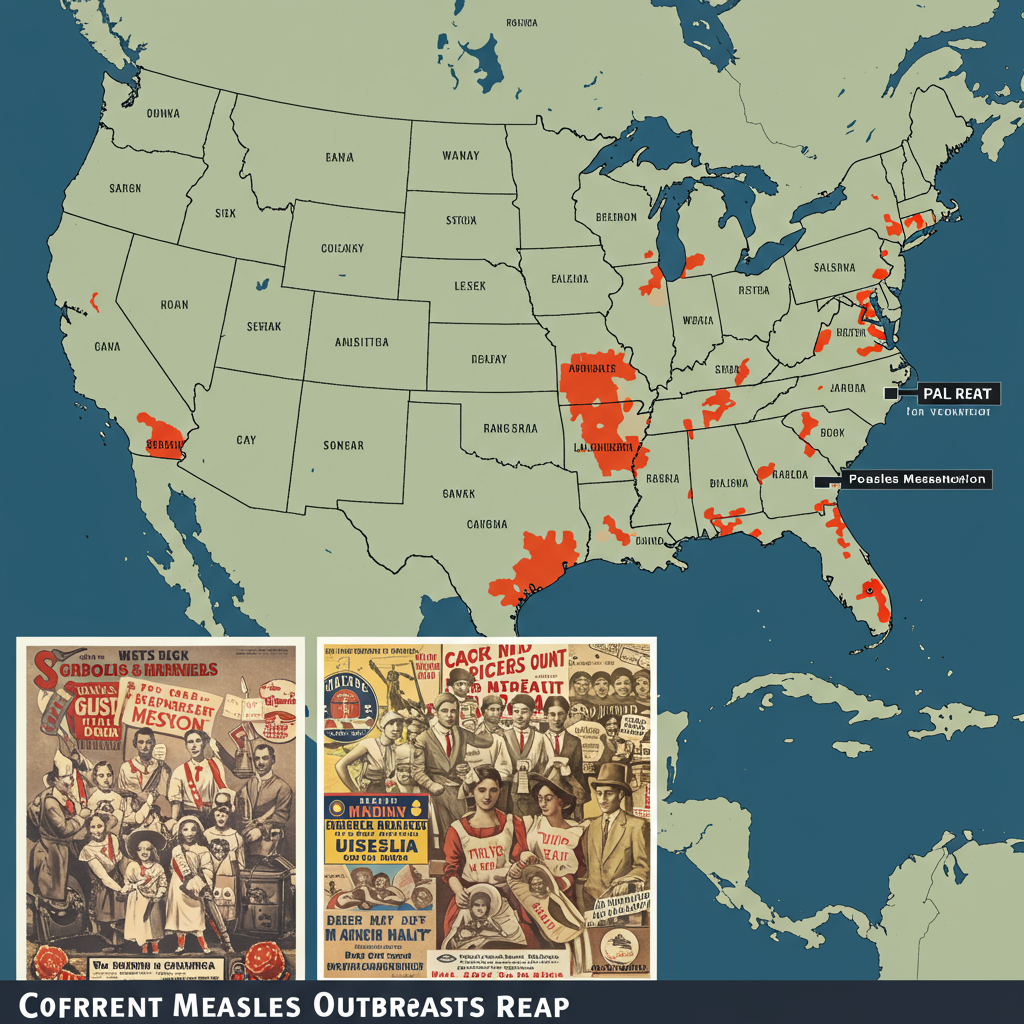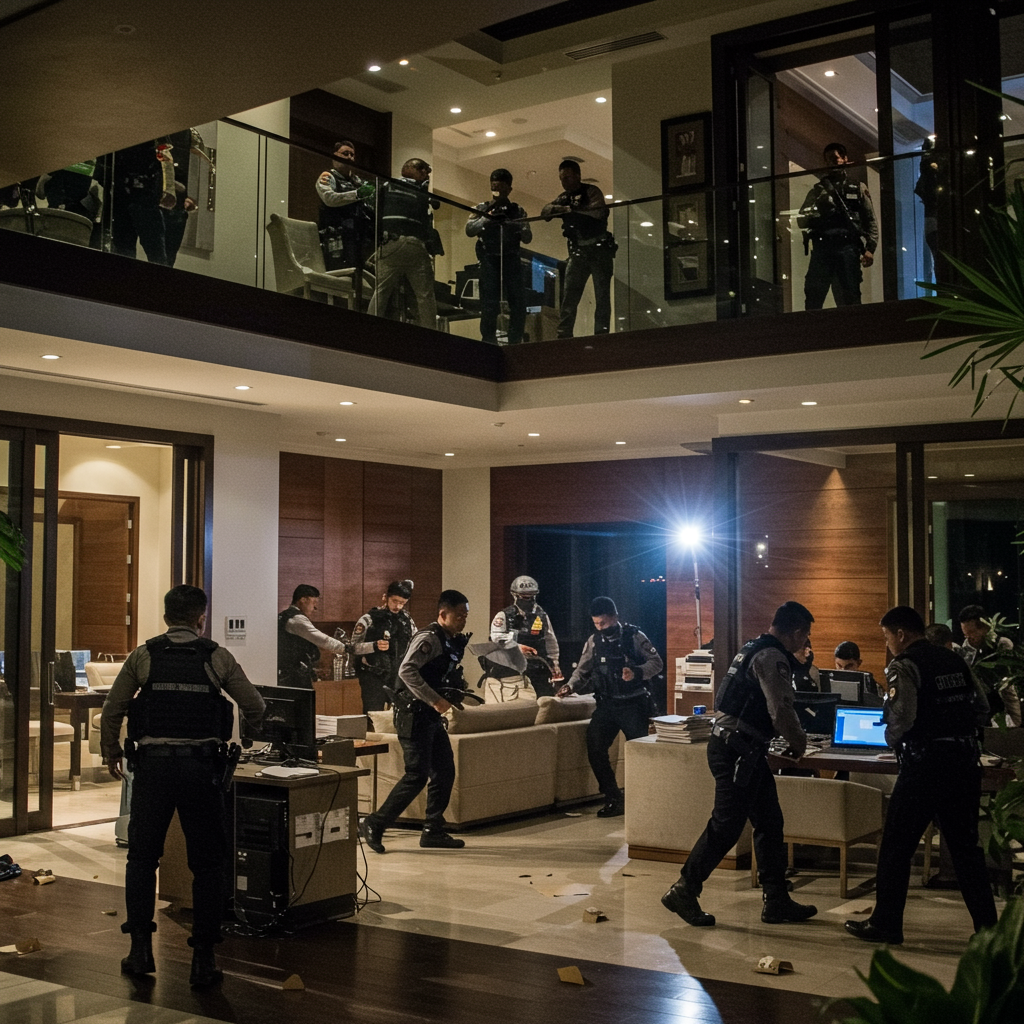Measles cases are surging across the United States, reaching levels not seen in over three decades. As public health officials grapple with this concerning resurgence, driven largely by declining vaccination rates, it’s worth looking back at a time when Massachusetts stood at the forefront of a successful campaign to defeat the virus. Decades ago, the Bay State played a crucial role in paving the way for the eventual elimination of measles in the U.S., a testament to effective public health initiatives and collective action.
The Current Measles Challenge
Today, the return of measles is a serious concern. Recent data indicates nearly 1,300 confirmed cases nationwide this year, marking a 33-year high. While the spread has slowed somewhat, active outbreaks persist in multiple states. This alarming trend directly links to increasing public skepticism about the safety and effectiveness of the measles vaccine, specifically the MMR shot. Fewer children receiving this crucial immunization means more people are vulnerable to a highly contagious and potentially deadly disease that the U.S. declared eliminated in 2000. Tragically, this resurgence has already led to three deaths among unvaccinated individuals.
Understanding the Measles Threat
Measles is far more serious than a simple rash. It can cause severe health complications. These include pneumonia and dangerous brain swelling. While often mild, its ability to spread rapidly through unvaccinated populations poses a significant public health risk. The current rise in cases highlights the fragile nature of herd immunity. When vaccination rates fall below a critical threshold, the virus finds fertile ground to spread, endangering infants too young for the vaccine and those with compromised immune systems.
Massachusetts’ Historical Fight
Decades before measles was considered eliminated, it was a common and feared childhood illness. Annually, millions contracted the virus, leading to thousands of hospitalizations and hundreds of deaths or permanent disabilities like deafness and intellectual impairment. Confronting this widespread threat required innovation, education, and broad cooperation across communities. Massachusetts was a key battleground and a leader in this effort.
Pioneering Vaccine Development
The roots of the modern measles vaccine are deeply embedded in Massachusetts research. Scientists at Harvard University and Boston Children’s Hospital undertook critical work in the 1950s. They successfully isolated the measles virus in 1954. This pivotal step paved the way for vaccine development. A licensed vaccine became available by 1963. Further research led to improved versions, culminating in the highly effective two-dose MMR (Measles, Mumps, Rubella) vaccine used today. This local scientific expertise provided the essential tool needed to combat the disease.
Overcoming Early Hurdles to Vaccination
Despite having a vaccine, getting it to the population presented significant challenges. Early uptake was slow for several reasons. Parental apathy was a major hurdle; many parents underestimated measles severity, viewing it as just a typical childhood illness one had to endure. Cost was another barrier. The vaccine could cost up to $15 per shot in the 1960s, which translates to over $150 in today’s dollars. This cost was prohibitive for many families, leaving millions of children vulnerable even with the vaccine available.
Launching a Statewide Campaign
Recognizing these obstacles and the need for swift action, Massachusetts public health officials launched an ambitious statewide campaign in the mid-1960s. The goal was clear: vaccinate as many children as possible to break the chains of transmission.
The town of Woburn set an early goal. They aimed to become the first measles-free city in the state. Their campaign involved offering free or low-cost vaccines. On a single day in March 1965, nearly 1,000 children were inoculated during a focused vaccination drive. This served as a model for other communities.
The state government sponsored local clinics across Massachusetts. Boston hospitals opened walk-in shot centers, making access easier for urban residents. The statewide doctors association actively encouraged vaccination among its members and their patients. This multi-pronged approach, combining public resources, medical community support, and accessible clinics, created “unprecedented demand” for the shots by mid-1966.
Measuring the Success
The results of Massachusetts’ dedicated public health campaign were dramatic and swift. In just one year, the state saw a remarkable 95 percent reduction in measles cases. This success was widely celebrated. Medical editor Herbert Black called it one of the “brightest chapters in American medicine,” placing it alongside major victories against diseases like polio. Massachusetts’ achievement provided crucial momentum and a successful blueprint. Federal health officials soon announced a nationwide measles eradication drive in late 1966. While their initial 1967 target was optimistic, the national effort eventually led to the disease being declared eliminated decades later.
Echoes of Resistance: Past and Present
Even during the height of Massachusetts’ successful 1960s public health campaign, “seeds of backlash” were present. These early signs foreshadowed modern antivaccine sentiments. Some small towns, like Stow, actively refused to hold public vaccination clinics. Predictably, these communities experienced much higher measles case rates compared to towns that embraced vaccination. For example, Stow recorded 80 cases in May 1966 with a population around 3,200, while Boston, with a population of 750,000, reported only 3 cases in the same month.
Some local authorities also discouraged vaccination at the time. They cited concerns about potential side effects, often exaggerating risks. State officials, including Dr. Nicholas Fiumara, worked hard to counter these claims. He argued that such actions were “spreading false fears” and undermining public health efforts.
These historical impulses persist today. Modern outbreaks are often concentrated within groups deeply suspicious of vaccines. Public figures sometimes express nuanced or hesitant views on the MMR shot. While major health bodies like the CDC state vaccination is “the best way to protect against measles,” phrasing sometimes includes language about the “personal decision” to vaccinate. Even in New England, known for generally high vaccination rates, some states have seen childhood immunization rates slip. This trend poses a direct threat, risking a return of measles to endemic status where it constantly circulates within the population.
Lessons for Today’s Challenge
The history of measles eradication in Massachusetts offers vital lessons for our current situation. It demonstrates that measles is a preventable disease. Overcoming outbreaks requires sustained public health efforts, accessible vaccination, and widespread public trust and participation. The success of the 1960s campaign was built on collective action and a shared understanding of the importance of immunization for community health.
Dr. Fiumara’s words from that era remain powerfully relevant today: measles “is a needless disease. No one has to have it.” The historical triumph in Massachusetts proves that through scientific innovation and collective commitment, we can protect our communities from this preventable threat. Addressing the current decline in vaccination rates and countering misinformation are critical steps to prevent measles from becoming a constant presence in our lives once more.
Frequently Asked Questions
Why did measles cases resurge after the US declared it eliminated?
Measles was declared eliminated in the US in 2000, meaning it was no longer constantly spreading within the country. However, cases could still occur due to international travel bringing the virus in. A resurgence happens when vaccination rates drop significantly in communities. Lower immunity allows imported cases to spread more easily, leading to outbreaks. The current 33-year high in cases is directly linked to increasing vaccine skepticism and declining uptake of the MMR shot, eroding herd immunity.
How did Massachusetts successfully reduce measles cases in the 1960s?
Massachusetts implemented a comprehensive public health campaign in the mid-1960s. This included pioneering vaccine research at institutions like Harvard and Boston Children’s Hospital. The state then sponsored numerous free or low-cost vaccination clinics. Cities like Woburn held mass inoculation drives. Hospitals offered walk-in shots. The medical community actively encouraged vaccination. These efforts addressed barriers like cost and access, drastically increasing vaccination rates and cutting cases by 95% in one year.
What were the early challenges to measles vaccination in the 1960s?
Initial challenges to widespread measles vaccination included parental apathy, as many viewed measles as a mild, unavoidable illness. The cost of the vaccine was also a significant barrier for many families; priced around $15 per shot (equivalent to over $150 today), it was often unaffordable. Furthermore, there were early instances of resistance, with some towns refusing clinics and some authorities spreading misinformation about potential side effects, mirroring certain modern challenges to public health.
The story of Massachusetts’ victory over measles decades ago serves as a powerful reminder of the effectiveness of vaccination and coordinated public health campaigns. While current challenges are complex, the historical success provides a roadmap and reinforces a critical message: preventing measles is achievable through collective effort and widespread immunization.
Word Count Check: 1048 words



